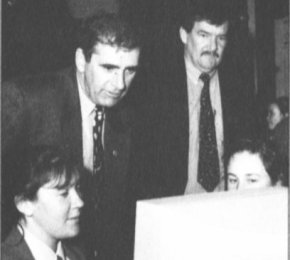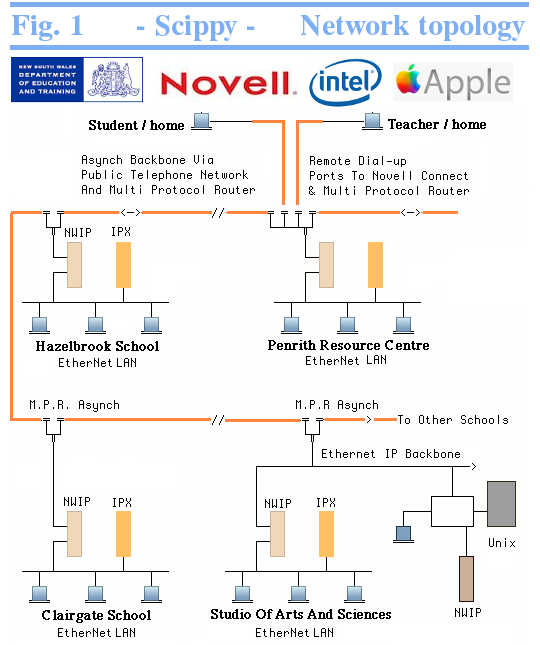NSW Government launch state-wide school network:
"Pacific Power, as the nations foremost electricity producer, is dependent on leading edge technology, communications and continuing strong links with our educators and students. Some will become engineers, scientists, technicians and administrators who take our organisations into the twenty first century. We must play a supportive role in their development"
This was the text keyed in by NSW State Premier - John Fahey (later Federal Treasurer) to officially launch PowerNet - a NSW-wide, schools computer network and Education Resources Package.
On September 3rd 1993 at Mt Piper's Energy Expo, the opening ceremony was also attended byiMinister for Energy - Garry West, Minister for Education, Training and Youth Affairs - Virginia Chadwick and children from five New South Wales schools
Collaboration:
The project was developed for Pacific Power by Sydney company Studio of Arts And Sciences (SAAS), in collaboration with The Board of Studies (VIC) & the New South Wales Department of School Education
Commenting on the strong partnerships being established between industry and education, Minister Chadwick acknowledged the support provided by Pacific Power, noting that "children's education would certainly be enhanced."

Premier John Fahey & Ross Bunyon - News Photo
About PowerNet:
Best described as a sophisticated computer network, PowerNet is a 'world first' computerised interactive education resource centre and database.
As well as linking schools across the state, It provides New South Wales schools with links to resources available via the international Academic Research Network (resources previously only available to international tertiary and research institutions)
Using Pacific Power's own state-wide communications resources, PowerNet puts "learning power" in the hands of students at virtually no cost - letting them use telecommunications as part of their everyday classroom study
PowerNet features national and international conferencing facilities, full colour graphics, access to other educational software and CD ROM libraries and educational projects and games. There is also a focus on learning about community energy options and environment issues. Students are able to increase their computer literacy while seeking knowledge in areas such as maths, science and geography.
Learning & Teaching:
Calrossy year 12 student Megan has been using PowerNet since March as part of a "pilot run" involving her school. Displaying the capabilities of the network, Megan pointed out the benefits to students such as herself.
"I can send and receive messages world-wide. This really helps with assignments as we can request information from a variety of sources and it's fun and easy to use", she said
Inviting Mr Fahey to officially start PowerNet, General Manager Ross Bunyon declared the education innovation had "grown from the public's demand for information". Ross also expressed hope that Pacific Power would "remain at the forefront of young people's vocational planning".
Promotional Efforts:
With many students remarking on the value of their excursion to Mt Piper, the success of the launch can be attributed to efforts by Public Affairs team members Phil Farrell and Helen Phillips.
Both had been involved with the program for more than two years, their contributions ranging from research, computer system development and liason with the Studio of Arts And Sciences to the planning of the launch day.
Connection:
PowerNet connectivity is available to schools in New South Wales at no cost (NOTE: Connecting to PowerNet will incur a local call cost when dialling in via Telstra).
About Studio of Applied Arts & Sciences
SAAS is a leading provider of standards-based information and communications integration solutions.

View SCIPPY Newsletters (examples only):
Subscribe To SCIPPY Mailing List:
The mailing list allows you to participate in discussions as well as receive general news and information. Schools may subscribe to Scippy Newsletters via list server, fax, snail or e-mail.Contact:
The Studio of Applied Arts And Sciences (SAAS) provided high level expertise at all stages of the project - from system analysis through to network design, engineering and rollout. SAAS created both the concept and education activities forming the Power Pack education kit.
SAAS were responsible for liason with National Curriculum & NSW state education authorities to ensure best quality outcomes - both for classroom teachers & students.
Copyright SAAS 2018